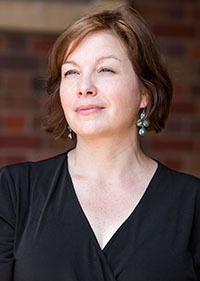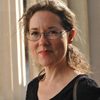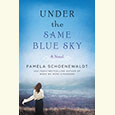Dancing with Lost Souls
Sonja Livingston resurrects forgotten women and girls in Ladies Night at the Dreamland
Sonja Livingston’s second essay collection, Ladies Night at the Dreamland, is a kind of literary search-and-rescue effort. In twenty-one delicately crafted pieces, some no more than brief vignettes, Livingston brings forth a remarkable group of women and girls from the past, all of them lost in one way or another. Most have been lost to history, and many lost their lives or their authentic selves—sometimes both—to a culture that offered them no safe place. Livingston engages her subjects in a deeply personal way, bringing her own fascination, sympathy, and identification with them into her accounts. She imagines her way into their lives with a lyrical intensity, making her response to their stories the bridge that delivers them from obscurity.
 A few of the women in Ladies Night at the Dreamland are actually more mythic than obscure. Virginia Dare, legendary daughter of the Lost Colony and, as Livingston describes her, “America’s first ghost,” is featured in one meditation, and Susan B. Anthony has a sort of glorified cameo as the ghost of defiant sisterhood past. (Readers of Livingston’s previous book, Queen of the Fall, will be familiar with her complicated regard for the woman she calls “Susan B.”) But the rest of the crowd at Livingston’s ladies’ night are unknowns or barely known. Krao Farini, who was exhibited in the nineteenth century as “Darwin’s missing link,” and Audrey Munson, a sculptor’s model who became notorious for appearing nude in silent films, are just notable enough to pop up occasionally in the flotsam and jetsam of the Internet, but “white slave girl” May Fielding is unlikely to ring a bell with anyone. Several of the essays here are devoted to women who are essentially unknown even to Livingston, being little more than a name on a letter or a figure in a childhood memory.
A few of the women in Ladies Night at the Dreamland are actually more mythic than obscure. Virginia Dare, legendary daughter of the Lost Colony and, as Livingston describes her, “America’s first ghost,” is featured in one meditation, and Susan B. Anthony has a sort of glorified cameo as the ghost of defiant sisterhood past. (Readers of Livingston’s previous book, Queen of the Fall, will be familiar with her complicated regard for the woman she calls “Susan B.”) But the rest of the crowd at Livingston’s ladies’ night are unknowns or barely known. Krao Farini, who was exhibited in the nineteenth century as “Darwin’s missing link,” and Audrey Munson, a sculptor’s model who became notorious for appearing nude in silent films, are just notable enough to pop up occasionally in the flotsam and jetsam of the Internet, but “white slave girl” May Fielding is unlikely to ring a bell with anyone. Several of the essays here are devoted to women who are essentially unknown even to Livingston, being little more than a name on a letter or a figure in a childhood memory.
But regardless of their degree of historical significance, Livingston treats each woman’s story with loving fascination and respect. In many of these essays, she’s present as a kind of guide, leading lost souls back to the world of the living. There’s a tenderness that crops up, as if she were writing of her own sister, lover, or child, and the writing is often exquisitely sensual. Here she is in “Dare,” imagining an encounter with the child Virginia Dare might have become:
Your hair smells of shellfish and juniper, your skin is browner than your mother would have seen fit, and the sound of your murmuring in my arms is like waves. I watch your eyes moving under closed lids. You’re dreaming of scuppernong vines.
The tone is not always gentle or elegiac. In “Some Names and What They Mean,” Livingston recalls three girls who were kidnapped, raped, and murdered in western New York during her girlhood, killings that haunted her and shaped her sense of self and safety in ways she barely understood at the time. When, in graduate school, a professor challenged her to share a personal memory of sexual harassment, she balks, unable and unwilling to speak “as if fear and being female in the world had a beginning and an end, as if it were outlined in black and could be colored in with crayons, as if I might lift a page, show it to the professor, and have her understand.”
Livingston’s visceral understanding of the myriad ways the world confines women and destroys them, robbing them of the fullness of what they might have been, gives the stories in Ladies Night a power they wouldn’t otherwise have. This is especially true in “The Goddess of Ogdensburg,” her essay on Audrey Munson, who began modeling as a teenager—most likely at the urging of her hard-pressed mother—and wound up spending more than sixty years in an insane asylum. An account that might have been merely lurid becomes tragic in Livingston’s telling, the story of a lively soul reduced to nothing but a body, made to believe that “being looked at is what she does best.” It’s a process still repeated for women and girls more than a century later—objectification, silencing, the crushing of possibility. Livingston’s radical sympathy resurrects Audrey and all her obscure sisters while holding a mirror up to us.

Maria Browning is a fifth-generation Tennessean who grew up in Erin and Nashville. A graduate of Mount Holyoke College, she has attended the Clothesline School of Writing in Chicago, the Moss Workshop with Richard Bausch at the University of Memphis, and the Sewanee Writers’ Conference. She lives in White Bluff.


